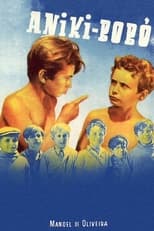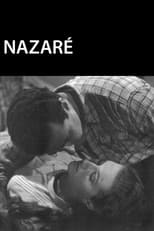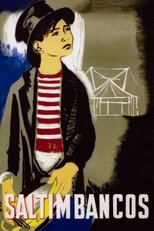Manuel Guimarães
¿Quién es Manuel Guimarães?
In 1931, Guimarães studied painting in the School of Fine Arts in Oporto. He started to work in 1936 as a theater scenographer, illustrator and cartoonist, as well as a film poster designer. He became interested in cinematic art, and started out as assistant of directors as Manoel de Oliveira, António Lopes Ribeiro, Jorge Brum do Canto, Arthur Duarte and Armando de Miranda.
In 1949, he directed the short documentary O Desterrado, a film about the life and craft of the Portuguese sculptor Soares dos Reis. Saltimbancos as his first feature-film, which is an adaptation of the novel Circo (Circus) of the writer Leão Penedo. The plot is centered on the life of a small travelling circus. Meanwhile, Guimarães worked in advertising in Metro Goldwyn-Mayer.
In 1952, Manuel Guimarães directed Nazaré, whose script was written by the neo-realist writer Alves Redol, portraying the life of the fishermen from Nazaré. The film had several cuts caused by censorship. Vidas Sem Rumo (1956), script by Manuel Guimarães and dialogues by Alves Redol, suffered even worse cuts: about half of the film was cut and entire scenes were removed, becoming an almost unintelligible film.
Being constantly attacked by the regime, Guimarães opted to direct more commercial movies about sport events, since 1956. In his attempt to return to fiction, (A Costureirinha da Sé – 1958) Manuel had to accept product placement in the film. His next works were essentially documentaries promoting Portuguese towns and products.
António da Cunha Telles, who meanwhile began to produce the first films of the Portuguese Cinema Novo (New Cinema), became interested in him and accepted to do an executive production and co-production of two of his next films: O Crime da Aldeia Velha (1964), an adaptation of a Bernardo Santareno play and O trigo e o Joio (1965) based in the book with the same name, by Fernando Namora, who wrote the script as well. However, the public preferred a different kind of cinema, more entertaining, and Guimarães turn again to art documentary.
Manuel Guimarães had some periods where he returned to illustration and graphic works in newspapers and other publications and continued painting, specially in the end of his life, but without any public expression.
The 25 de Abril brought him hope, but it was too late. Ill, Manuel Guimarães couldn't end his last film, Cântico Final, adapted from the novel with the same name wrote by Virgílio Ferreira. The film was ended by his son, Dórdio Guimarães.
Trabajos destacados
Géneros más habituales en las películas de Manuel Guimarães
Series
Sin informaciónCompañeros de trabajo recientes de Manuel Guimarães
Las imágenes y retratos de actores y actrices mostrados en este sitio web son obtenidos de la base de datos pública de The Movie Database (TMDb), utilizada bajo los términos y condiciones de dicha plataforma. En caso de que alguna imagen o fotografía sea incorrecta, ofensiva, o pueda infringir derechos de imagen o copyright, puede ser editada o eliminada directamente en TMDb. Esto provocará su eliminación automática en este sitio web. Adicionalmente, si usted desea solicitar la eliminación de una imagen directamente en nuestro sitio web, puede utilizar el formulario de contacto ubicado al pie de la página. Atenderemos su solicitud de manera expedita y tomaremos las medidas necesarias para garantizar el cumplimiento de los derechos aplicables.
The images and portraits of actors and actresses displayed on this website are sourced from the public database The Movie Database (TMDb), used in accordance with its terms and conditions. If any image or photograph is incorrect, offensive, or may infringe image rights or copyright, it can be edited or removed directly on TMDb. This will automatically result in its removal from this website. Additionally, if you wish to request the removal of an image directly from our website, you may use the contact form located at the bottom of the page. We will promptly address your request and take the necessary measures to ensure compliance with applicable rights.

















